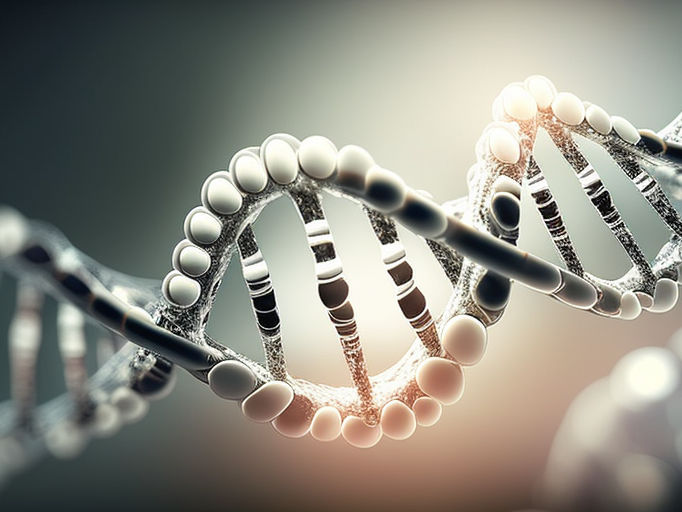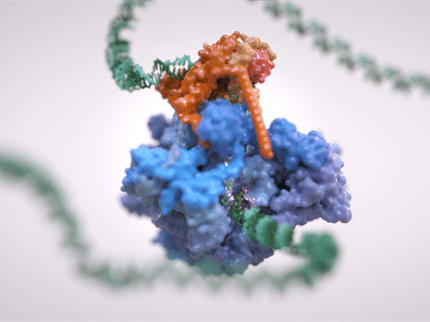Scientists discover a new stress response pathway for repairing RNA-protein crosslinks caused by toxic aldehydes
The research team of Professor Petra Beli and their collaborators have discovered that aldehydes, a type of toxic chemical produced by the body after drinking alcohol, damage cells by creating chemical crosslinks between RNA and proteins, thereby interfering with protein production. The scientists in Beli's group, who come from the Institute of Molecular Biology (IMB), Johannes Gutenberg University Mainz (JGU), and the Centre for Healthy Ageing in Mainz, further found that the cell removes these crosslinks using a new, evolutionarily conserved stress response pathway. These findings shed light on how aldehydes affect our bodies and the mechanisms we have adapted to deal with these toxic by-products of cellular metabolism.
Our cells are constantly exposed to many toxic chemicals that can damage our DNA, RNAs, and proteins. Aldehydes, such as acetaldehyde and formaldehyde, are one such type of chemical compound. They can be found in the environment, i.e., in air, water, or food, but are also produced internally by metabolic reactions within our cells. Most notably, they are produced as by-products when our cells detoxify ethanol after we have consumed alcoholic beverages.
Aldehydes are toxic to our cells because they can damage DNA, causing breaks that interfere with transcription and DNA replication. The build-up of acetaldehyde in our bodies is a major contributor to some of the hangover symptoms we get after drinking. Mutations that reduce the cell's ability to remove aldehydes are also linked to genetic diseases such as Fanconi anaemia. However, it was not previously known whether the toxicity of aldehydes is solely a result of damage to the DNA, or if aldehydes also interfere with other cellular mechanisms.
In this study, which was published in Molecular Cell, Professor Petra Beli and her colleagues discovered that in addition to damaging DNA, aldehydes also create chemical bonds called crosslinks between RNA and proteins in the cell. These crosslinks stall ribosomes as they attempt to translate RNAs, inhibiting the production of new proteins. They also found that the cell removes these RNA-protein crosslinks via a new, evolutionarily conserved stress response pathway involving post-translational modification of the crosslinked protein with a special form of ubiquitylation and a protein called VCP.
"The ubiquitylation-driven stress response elicited by RNA-protein crosslinks has been overlooked as a cellular quality control pathway," said Beli, Adjunct Director at IMB and Professor of Quantitative Proteomics at Mainz University. And Aldwin Suryo Rahmanto and Christian Blum, who are joint first authors of this study, added: "Our results open a completely new line of research on RNA-protein crosslinks that are induced by reactive aldehydes." These results demonstrate that aldehydes damage our cells in more than one way and describe for the first time a mechanism for removing RNA-protein crosslinks in our cells.
Importantly, our body's ability to remove aldehydes gradually decreases with age, which could result in more RNA-protein crosslinks forming as we get older. The authors therefore speculate that this new stress response pathway may be particularly important for maintaining cell function in older individuals.

Symbolic image
Computer-generated image
Original publication
Most read news
Original publication
Aldwin Suryo Rahmanto, Christian J. Blum, Claudia Scalera, Jan B. Heidelberger, Mikhail Mesitov, Daniel Horn-Ghetko, Justus F. Gräf, Ivan Mikicic, et al.; "K6-linked ubiquitylation marks formaldehyde-induced RNA-protein crosslinks for resolution"; Molecular Cell
Organizations
Other news from the department science

Get the life science industry in your inbox
By submitting this form you agree that LUMITOS AG will send you the newsletter(s) selected above by email. Your data will not be passed on to third parties. Your data will be stored and processed in accordance with our data protection regulations. LUMITOS may contact you by email for the purpose of advertising or market and opinion surveys. You can revoke your consent at any time without giving reasons to LUMITOS AG, Ernst-Augustin-Str. 2, 12489 Berlin, Germany or by e-mail at revoke@lumitos.com with effect for the future. In addition, each email contains a link to unsubscribe from the corresponding newsletter.





















































